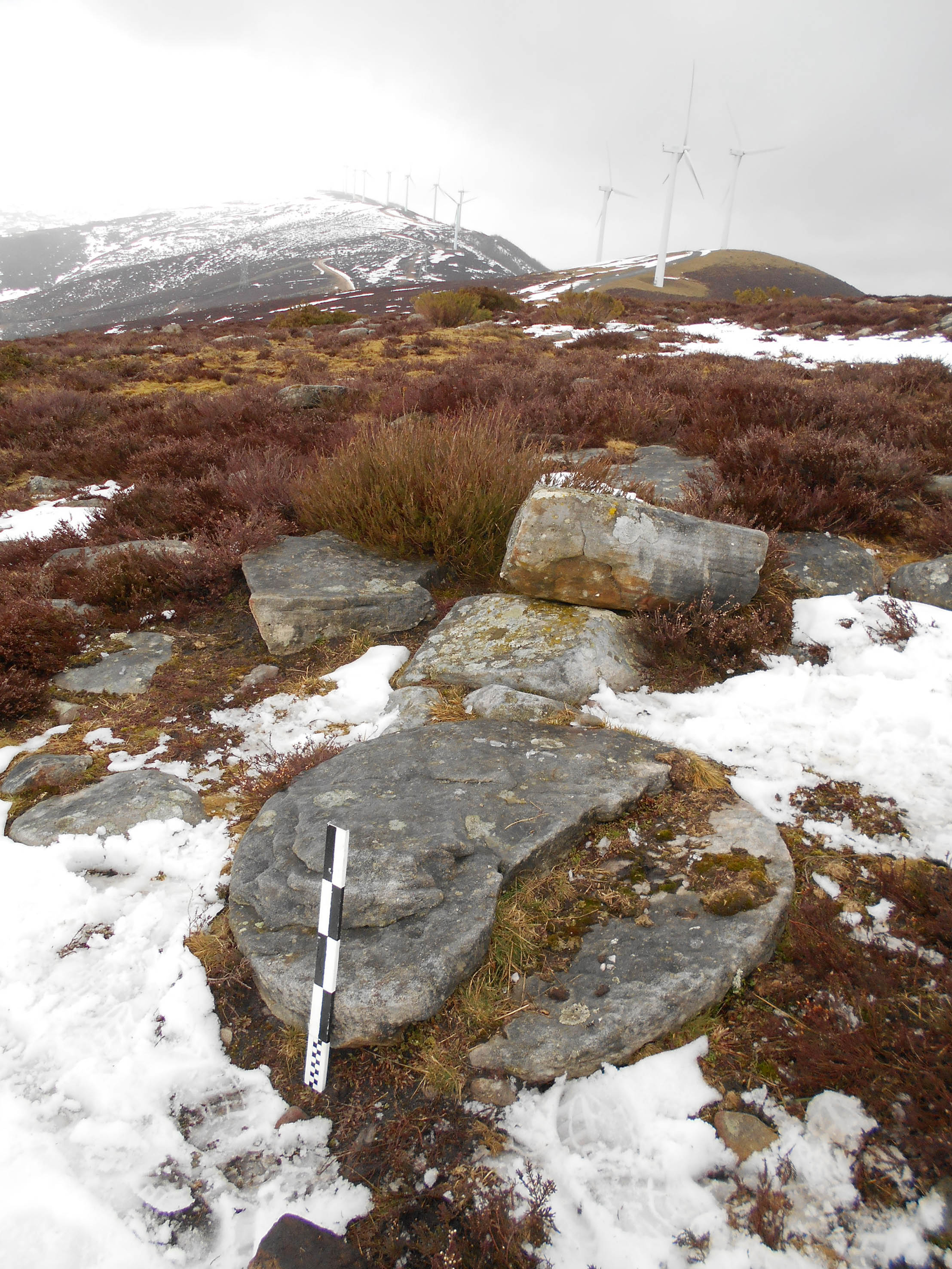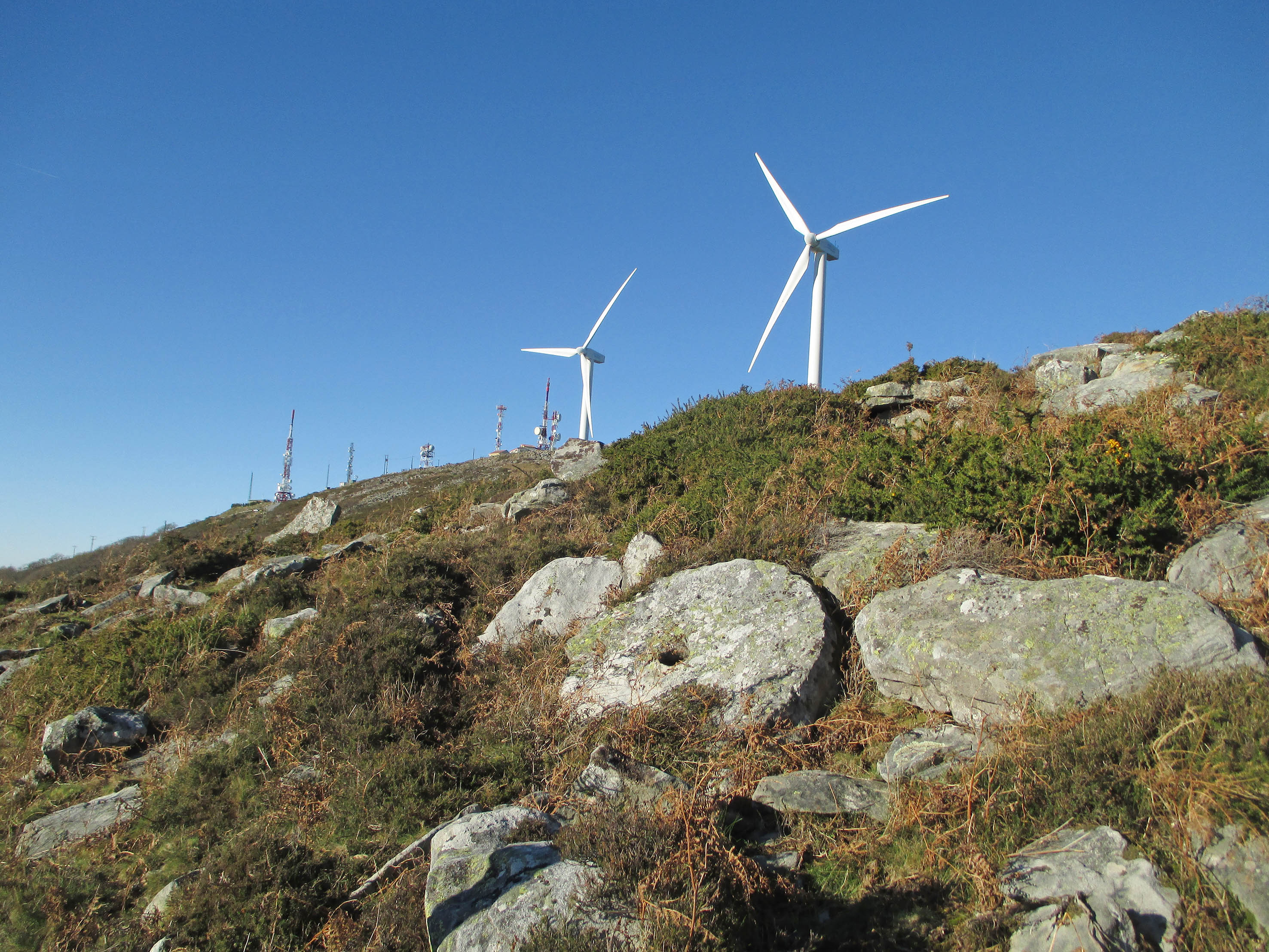Basque ethnography at a glance

A 110-cm-millstone abandoned in Mount Burgamendi (Barrundia). Javi Castro. Aranzadi Science Society.
Stones were vital to mills for grinding grain into flour. Mills themselves are as old as farming. Hand-operated at an early stage, they evolved into more and more sophisticated devices, and their performance improved significantly. Former flour mills were equipped with millstones (errotarriak, in Basque) powered by water (watermill), draught animals (animal-powered mill) or, on fewer occasions, the wind (windmill). Wind farms are found today in some of our mountains, the natural landscape of mountain watersheds having been altered by modern windmills that instead of white flour produce ‘green’ electrical power.
Coincidentally, wind farms consisting of large wind generators we see from the distance have been installed where precious and necessary grindstones used to be extracted from coarse and very tough stone, mostly sandstone. Limestone was not suitable for this purpose. The millstones were quarried on-site and later moved down to the mills along ancient tracks on a rudimentary sledge (narria) or a cart (gurdia, orga). The use of a thick, forked tree branch (ahardia) to carry the heavy load is likewise documented.

Millstone of 120 cm in diameter encountered in Mount Oiz (Berriz). Javi Castro. Aranzadi Science Society.
At the core of the Errotarri project is field research conducted for nearly 10 years now in an attempt to recover the quarries where sandstone for millstones was excavated. So badly needed for food, millstones were major sources of revenue, since each piece could be worth up to 15 ducats, equivalent to some 8000 roof tiles or 10 sheep and their young, back in the 17th century. A damaged millstone was indeed a true tragedy for the miller, who came to be a captive customer of the millstone maker.
The mountain was the workplace of colliers, shepherds, chestnut sellers, as well as millstone makers. About 150 years ago the millstone trade fell into decline, and very little information has been recovered overall, with rare exceptions. We know quarrymen lived in the mountains until the hand-carved stones were completed and have found some of the primitive huts they inhabited and even tools and other implements they used. Mountains being so large, the chances of coming across a quarrying site are rather small. You have to search the ground thoroughly for millstones, often covered with moss and other vegetation, that have remained abandoned and forgotten for several centuries.
Flawed millstones are scattered across quarries located in heights of 1440 m (Baigura, Urraúl Alto), 1300 m (Arroriano, Zigoitia), 1240 m (Oderiaga, Orozko), 1235 m (Egide, Anue), 1025 m (Burgamendi, Barrundia) and 975 m (Oiz, Berriz), to mention but a few examples. In actual fact, millstones were not only manufactured in the mountains but wherever adequate rocks were found, even at the seashore, as is the case with three quarries examined in Mendexa and Mutriku.
Fortunate enough to have the assistance of mountaineers, hunters, rangers and collaborators with a trained eye to look for the said stones, I have managed to locate unidentified vestiges and catalogue over 200 millstones, of which no more than a handful were previously known.
Javi Castro – Department of Ethnography – Aranzadi Science Society
Translated by Jaione Bilbao – Ethnography Department – Labayru Fundazioa
For further information about research on millstone quarries at European level visit http://meuliere.ish-lyon.cnrs.fr/; you may also watch a video at https://www.youtube.com/watch?v=c0vsQY6jrHU.

